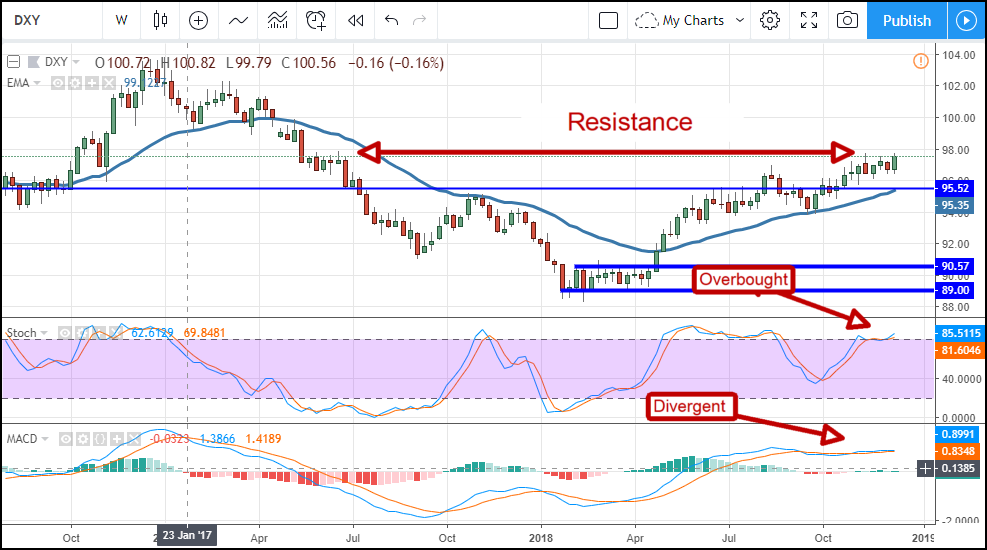This Is The Dollar Forecast You Need To Read Now
The Change That Shook The Market
A few week’s ago in a speech to the NY Economic Club FOMC chief Jerome Powell indicated neutral interest rates were close at hand. His remarks, along with data and comments from other Fed members, have led the market to believe the FOMC will pause or slow-down its rate hiking plans. What his remarks didn’t do was lead the market to think there wouldn’t be a rate hike at the December meeting.
The data shows inflation acceleration is largely contained but inflation is still hot. CPI and PPI have both been trending well above 2.0% all year and, although they’ve peaked, are still running above that target today. The PCE Price Index has been a little more tame but, with wages growing above 3.0% in the last month and CPI/PPI above 2.0%, there is little doubt core inflation is still feeling upward pressure.
The catch-22 for the Fed is that higher rates are having a negative impact on the economy and most specifically the housing market. Home sales have been notoriously weak this year despite strong demand and high prices (incentive for sale) and largely blamed on rising rates. Rising rates are making it more expensive for new home-buyers because monthly payments go up as rates go up. The Fed wants to curb inflation without causing the economy to stall.
What this means is a high chance of rate hike next week and then a pause, a short-pause, that will be based on the data. According to the CME’s Fedwatch Tool the chances of a December Fed rate hike have been rising. The odds are now greater than 80% for a quarter point hike but many think that will be the last one for some time. The odds for a single hike in 2019 are only a little better than 53% and that is where the risk for traders is.
If, when, the Fed indicates a pause in rates traders need to be wary of the data, and how new trade developments will affect them. The pause in hikes will only last as long as inflation growth is contained to 2.0% and that may not last long if global trade is reinvigorated. The US/China trade standoff has seen several positive developments over the past week that could lead to a swift and positive resumption of normalized trade relations, boost global economic growth, and kick inflation back into high-gear.
Traders who think an FOMC pause means the dollar is set to enter a downtrend may find themselves on the losing end of their positions. The dollar is more likely to experience volatility within its range and continue trading within that range over the next year. In the near-term look for the dollar to move up on next week’s rate hike and then fall back within its range after that. The FOMC may be putting their rate hikes on the back-burner but probably not for long, and the ECB and BOE are right behind with plans to hike rates (data dependent) over the next twelve months.
